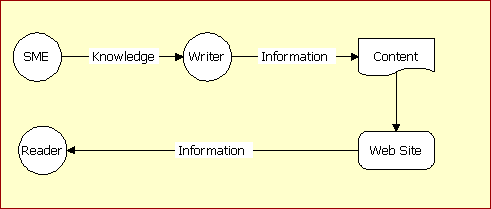|
We hear the term knowledge management bandied about. It sounds
suspiciously like a trendy new phrase for what we used to call
"documentation". In truth, knowledge management is more than
documentation. It encompasses documentation, data management, library
management, and information design. Knowledge management is increasingly
important; as the amount of content has increased, the task of locating
the information in the content has become more difficult. You see,
information is different from content. And knowledge is something that derive
from information.
Let's look at an example. British Airways have a fourth passenger class that
fits between business class and economy class. This new class is called
World
Traveller Plus
. If I want to find information on this new class, I should be
able to look at the British Airways Web site. But although there is lots of content
on the Web site, the information is very hard to find.

You can look at the page concerned by clicking on its screen capture above.
The page refers to 'extra comfort', 'convenience', 'more space', and 'without
the premium price tag'. But the content is all non-specific. It doesn't tell me
how much leg room the seats have, or why it is more convenient, or how far the
seats are apart, or whether the food is different, or how much it costs. So lots
of content, but very little information. And what knowledge can I
gain from the page? Very little. I might get a warm feeling, but I'm still none
the wiser.
One of the reasons that Web sites don't provide information is that they are
treated like television, not like a book or a library. Graphic designers and
marketers have a different vision of the Web than do writers, librarians and
communicators. To a graphic designer, a library is boring. To a reader, a
library is a treasure trove.
Which brings us to the reader - often forgotten in the Web development cycle.
No matter how many studies are conducted, the consistent message from Web users
is that they don't want flashy Web sites. They want functional sites, pages that
download quickly, rich in information. Easy to navigate. Well structured.
Up-to-date, and well supported. They want the information contained in the
content to be accessible. A good Web site therefore requires good information
management.
Where does the information come from? From someone in the organisation with
the knowledge. In the technical writing world, these people are known as SMEs,
or Subject Matter Experts. The diagram below shows the knowledge life
cycle. Knowledge management is the organisation and administration of the
knowledge life cycle.

Without knowledge management, information is not transferred smoothly from
Web site to reader. Knowledge management requires "information
architects" with librarian skills to structure and organise content,
writers to shape the information into words, and editors to tune and filter the
content so that the information can be found.
Further reading: Information Design
|